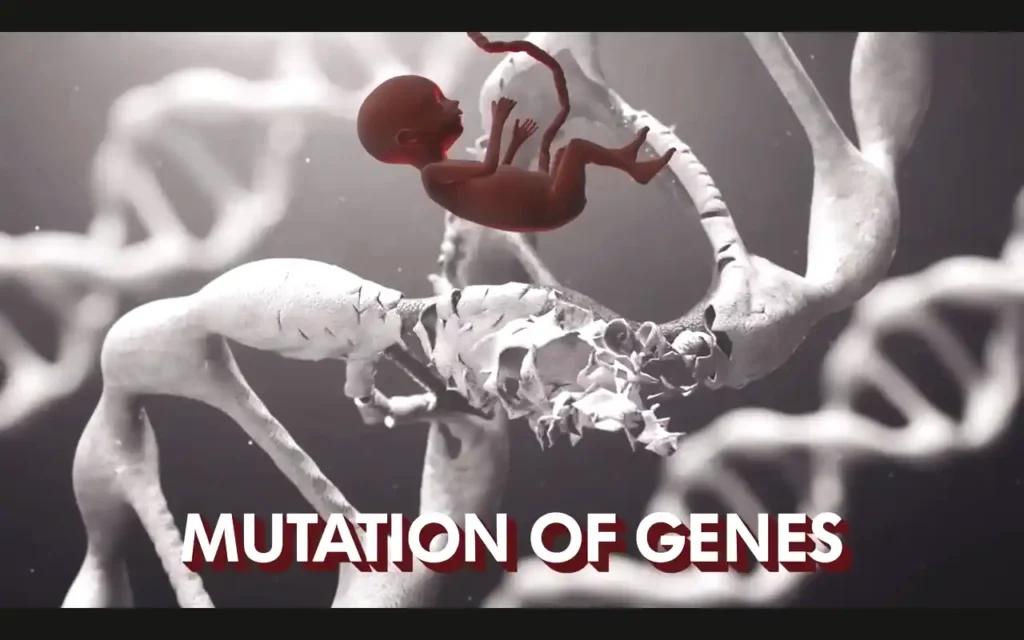How did intelligent life originate on Earth? Is evolution merely a theory or a fact? Where were our ancestors from? Hello Friends! Life began on Earth about 4 billion years ago. After billions of years of evolution, countless species of plants and animals have evolved. All these trees, plants, animals and creatures that you see today all exist because of evolution.
One of these species is Homo Sapiens i.e. humans. But the question arises that if humans came from monkeys, then why do monkeys still exist? Why didn’t all these monkeys, chimpanzees and gorillas evolve into humans? People often ask such questions. Some people deny evolution. He says this is a lie.
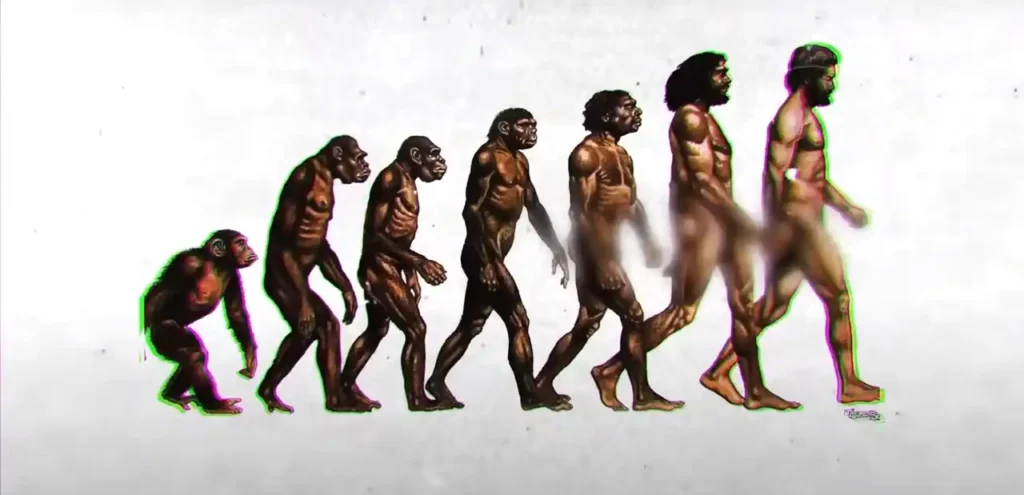
How true is this evolution theory? Is this just a theory or a fact? And how did these different types of animals evolve? Let us find out in this article. Let’s start by clearing up the biggest misconception. Evolutionary theory does not claim that monkeys became humans. Instead, it has been claimed that all chimpanzees, gorillas, monkeys, and humans have a common ancestor.
And that ancestor is not alive today. If you want to visualize growth, imagine a tree. A tree starts with just a trunk. Then its branches grow. Then its small branches grow. If it continues to grow like this, you can see the tips of the tree. Those endpoints are all living beings that exist today. But one question that will still linger in your mind is this: Why did some of our ancestors evolve into humans, some into chimpanzees and some into monkeys? Why? You will get the answer to this later in this article.
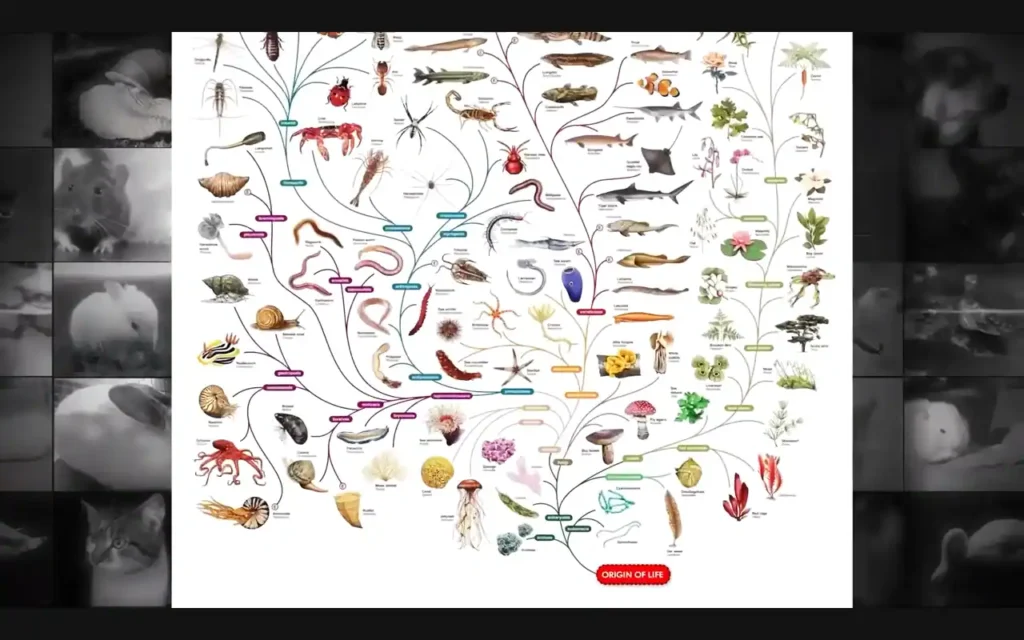
In the year 1859, Charles Darwin wrote the historical book ‘On the Origin of Species’. In this book he has talked about the theory of natural selection. Now, when you hear the term ‘theory of natural selection’, you might think it’s a mysterious thing. All living beings have some complex internal engineering.
But no one. It is really quite simple. Whenever reproduction occurs, whether it is in humans, animals, or plants, genes are transferred from one generation to the next. Our genes are passed on to our children. But genes pass on with some mutations. There are some changes in genes. You may see some variations.
And these variations are often inherited by future generations. For example, if you have brown eyes and your children have green eyes, it means that there is a mutation in their genes. The genes that determine eye color became mutated. It is possible that the next generation of their children may also have green eyes.
Often, these variations are beneficial or harmful depending on the environment. Some survive and some die. This process is called natural selection. For example, suppose a frog, which is brown in color, lives in a forest. He has 5 children. Of the 5, 4 are brown, and one is green. The green frog can camouflage itself well and hide itself among the green trees.
He gets benefit from this. One day, a hunter comes and eats the brown frogs because they are easily visible. But this green frog is not spotted; It is safe, so the color of its descendants is also green. This is how, broadly speaking, the principle of natural selection works. Here, a term has been used: ‘Survival of the fittest’.
Many motivational speakers misuse this term by saying that only physically healthy people will be able to survive. People imagine that according to the theory of natural selection, only those who have big biceps, triceps, and six-pack abs will be able to survive. But this statement is wrong. Fit doesn’t mean the biggest or most powerful person.
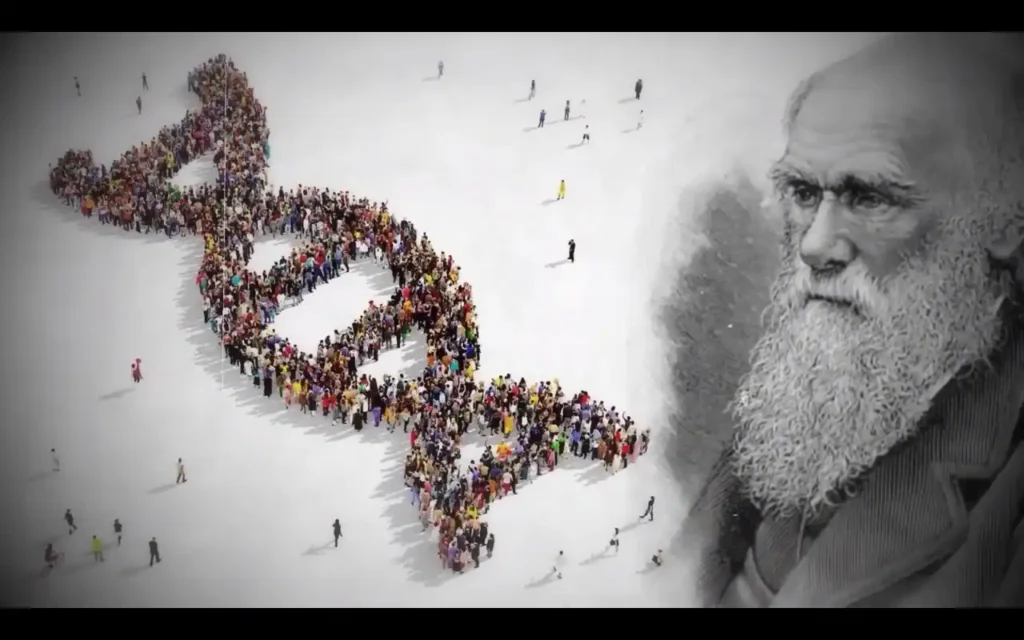
According to Charles Darwin, fit means that which fits best in its surrounding environment. Here environment does not just mean the climate and temperature around you. This also includes the plants and animals around you. Who is best suited for the position? So, whether you are fit or not can change over time.
During the era of dinosaurs, due to natural selection, some evolved to become giants. Because their large size can easily protect them from their predators. But on the other hand, when there was food shortage, staying fit meant reducing size. So that the need for food can also be reduced. So, some evolved to be smaller in size.
Similarly, some animals developed more hair on their bodies to provide more insulation in the cold. Like a polar bear. Because of their thick fur, it is easy to stay warm in cold weather. But on the other hand, like humans, some animals started losing body hair. So that it is easier to control their body temperature in summer.
This makes them sweat easily, which cools the body.
Now that you understand the basics, let’s understand how evolution happened.
On the evolutionary tree, if you go back in time, you’ll find common ancestors for every species. Humans and monkeys have the same ancestors. Man, cow and buffalo have a common ancestor. All animals, trees and plants have stores. If we go back in time, it started about 4 billion years ago.
The earth was very different at that time. There were no continents on Earth. The earth was covered only with water. And this water is where life beginsHui. What was the first living being? Scientists have given a very simple name to this first creature. He called it the first universal common ancestor. In short, it became FUCA.
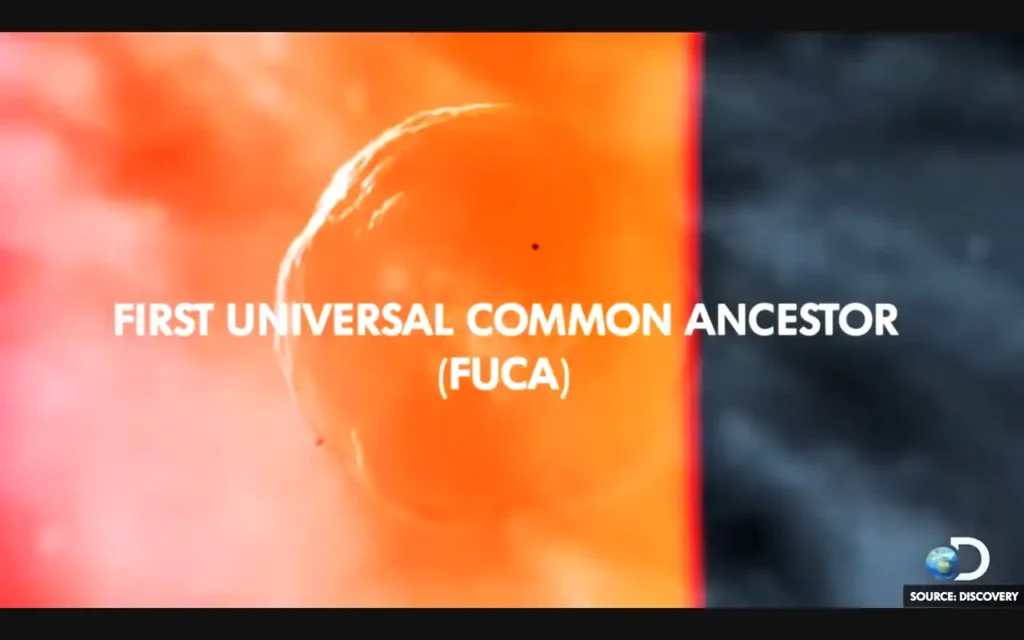
At that time there were neither genes nor DNA. There were just a few free-floating nucleotides that assembled into an RNA. This RNA formed a molecule called PTC and self-organized to form FUCA. The first ancestor of all of us was not even a single cell. Today, we call cells the building blocks of life. But since FUCA wasn’t even a cell, was it even a living thing? Was it living or nonliving? It is difficult to imagine.
But imagine a virus. Virus is neither called living nor non-living. A virus cannot grow or reproduce on its own unless it is in the host’s body. Imagine something like this. I will not go into technical details here as that would require a separate article. How, in the beginning, there were only a few elements that became nucleotides and then RNA.
If you want me to make a separate article on this, let me know in the comments. But for now, let’s move on. 3.8 billion years ago, FUCA evolved as a unicellular organism. We call it LUCA, Last Universal Common Ancestor. All living things on Earth, trees, plants, animals, bacteria and fungi, we all have a common ancestor, LUCA.
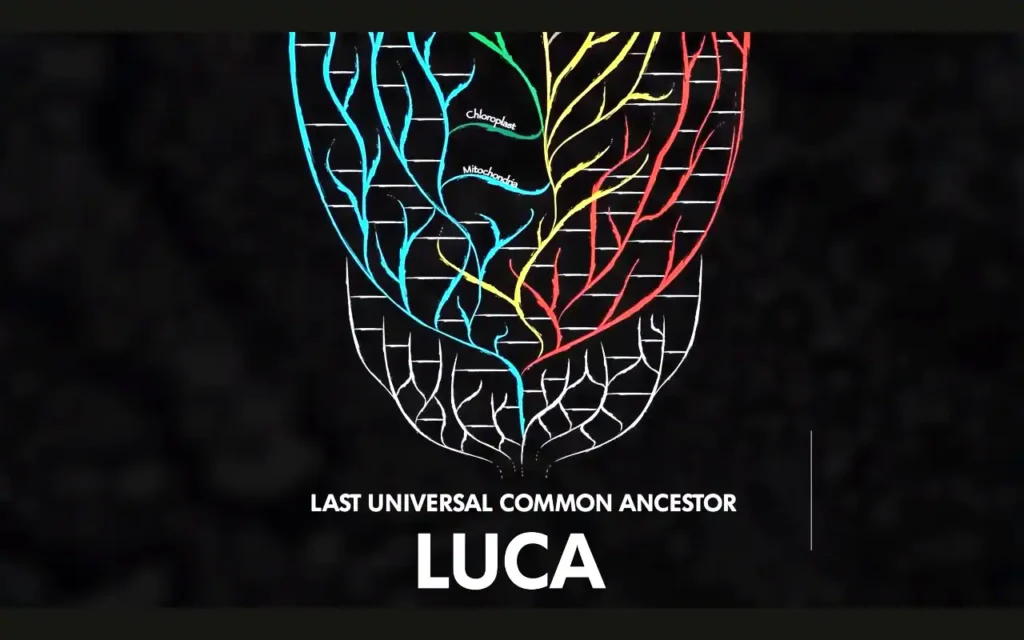
Scientists believe that it must have been a prokaryotic micro-organism with a cell membrane. You might have studied the difference between prokaryotes and eukaryotes in school. Eukaryotes have a proper nucleus in their cells. Whereas, prokaryotes do not have a proper nucleus. Scientists have estimated that LUCA contained about 355 genes.
These 355 genes are found in every organism living on Earth till date. But this is a very new discovery. Scientists discovered it in July 2016. This discovery was made by William Martin of Düsseldorf University. Four months before this discovery, scientists created the smallest synthetic cell that can survive and reproduce on its own in the laboratory.
The artificial cell contains 473 genes. But in LUCA, there were 355 fewer than in the synthetic cell. That is why LUCA is classified as semi-alive. It was not living well. Scientists believe that the viruses we see today may have either evolved before LUCA or co-evolved with LUCA.
Because viruses have played an important role in development since the beginning. Even though the COVID-19 virus was the black sheep of the virus family, but, for our survival today, everything needs some virus or the other. With LUCA, we saw it regenerate through cell division. And after millions of years evolution took place when LUCA split into two parts.
Bacteria and Archaea. These two microorganisms are very similar to each other. They differ slightly in terms of cell wall and plasma membrane. After several billion years of evolution, a very special type of bacteria emerged. Cyanobacteria. It was the first bacterium capable of photosynthesis.
Using sunlight to generate energy. Water was used as fuel and the end product was oxygen. When lots of cyanobacteria in the ocean used photosynthesis, large amounts of oxygen were released into the air. This event is called the Great Oxygenation Event. Due to this the level of oxygen in the atmosphere became high. This event occurred 2.2 billion years ago.
But evolution had to step in here to make DNA stronger and more protected. This led to the formation of the nucleus in the cell. The DNA was kept safe inside the cell so that it could be protected. Secondly, after millions of years, we can see evolution outside the nucleus, in the cytoplasm. Some types of cyanobacteria turn into chloroplasts.
This is why all plants and trees today are capable of photosynthesis. From here the plant kingdom was born. On the other hand, since oxygen was abundant in the atmosphere, an ancient bacteria decided to use this available oxygen. Using oxygen to generate energy. This was the beginning of aerobic respiration.
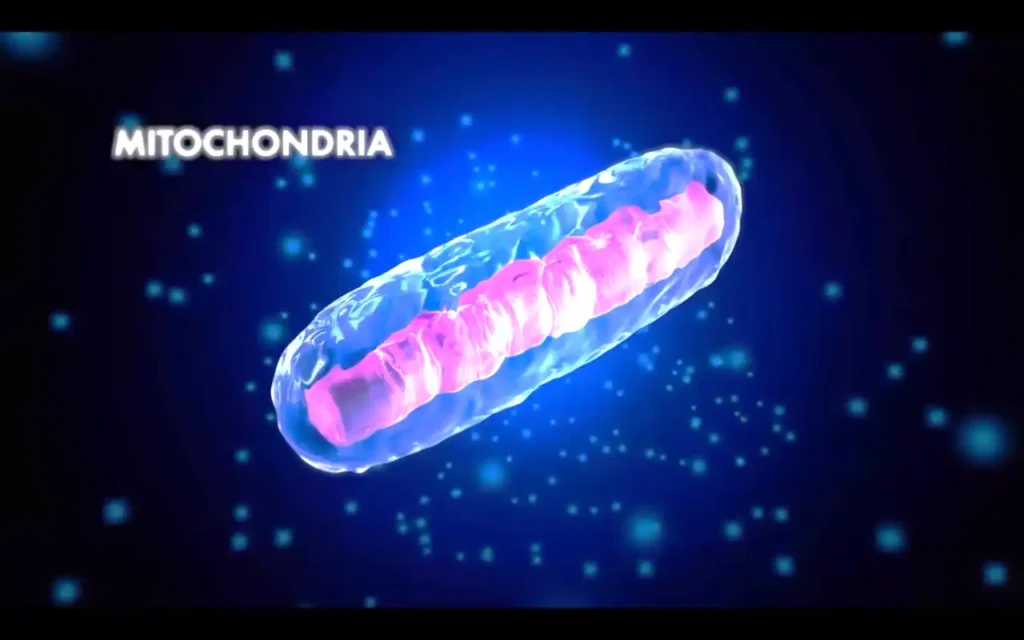
This bacteria evolved inside another archaea to create mitochondria, now known as the powerhouses of the cell. An important element in all eukaryotes. Later, these eukaryotes divided into three sub-branches. Animal kingdom, Fungal kingdom and Algae kingdom. Algae kingdom is also called Protista.
Here you can see the tree of life being born. Initially it has three branches, Bacteria, Eukarya and Archaea. And then Eukarya divided into plants, animals, fungi and algae. Scientists are still debating whether eukaryotes originated from archaea or whether archaea and eukaryotes are two separate branches with a common ancestor.
By now you might be wondering when we evolved from monkeys to humans. We’re still here talking about bacteria and microorganisms. Some people feel ashamed that humans are related to monkeys and here we are talking about bacteria. *How insulting!* But this is the truth, friends. In each of our bodies.
Only 43% of the cells in our body are human cells. the remaining bacteria, andThere are viruses, fungi and RKI cells. If we go back to the story, multicellular life was born about 900 million years ago. Why? Due to development. If the cells were in a group then it would be easier to survive. Instead of being unicellular and alone, multicellular organisms had an increased chance of survival.
That is why we see multicellular organisms. About 555 million years ago, we see a common ancestor of all animals. Ikaria Variotia. It was smaller than a grain of rice. It was a bilateral worm which had a front end and a back end. Bilateral implies symmetry. The organism will be vertically or horizontally symmetrical.
This means that all organisms will have a right side and a left side. And both sides are similar to each other. There are very few exceptions to this. Such as starfish, which have radial symmetry instead of bilateral symmetry. In fact, all animals are bilateral. Be it a human being, a pig, a spider or a butterfly.
So, scientists found these fossils in South Australia and when the fossils were carbon-dated, they were found to be from a creature that lived 555 million years ago. It was also a bilateral creature. It is considered to be the oldest organism ever discovered. That is why it is known as the ancestor of all animals.
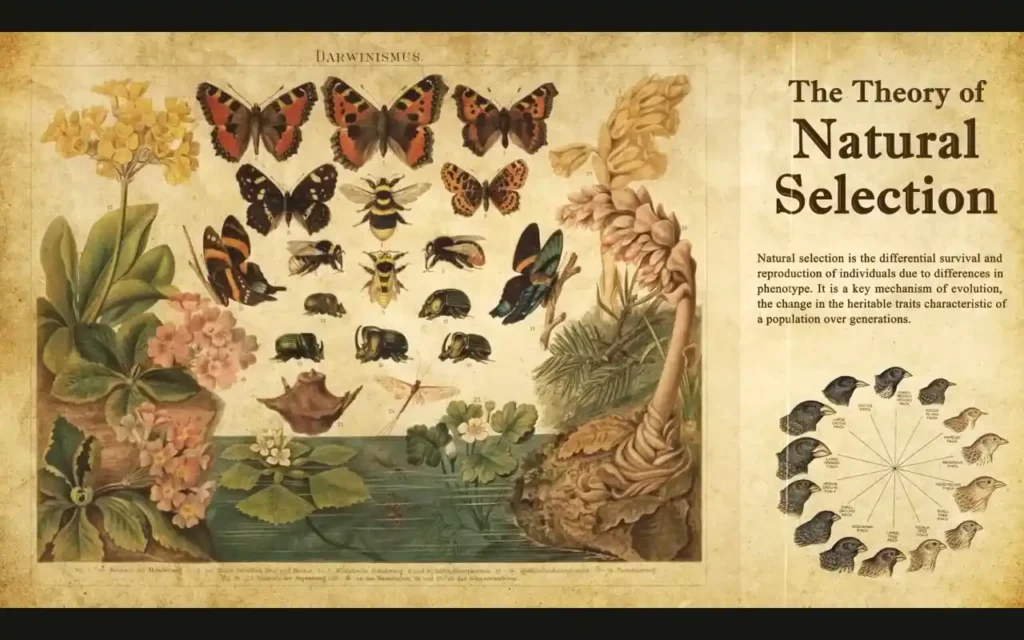
Then vertebrae, or spines, began to develop. All fish, reptiles, birds, and mammals are called vertebrates because they have a backbone. The first vertebrates evolved 480 million years ago. It was a fish named Arandaspis. After this, four legs of living beings started developing. Animals which have four legs are called tetrapods.
And this development happened in water. In this story we have not reached the ground yet. This fish, which is called Eusthenopteron, lived 375 million years ago. It is a 6 feet long fish, whose jaw is very strong and teeth are sharp. It is said to be the connection between all fish and land vertebrates. Perhaps one day, the fish said, fear is the way to victory, and it came out of the water onto land.
I’m kidding, evolution doesn’t work that way. Look at this animal. Tiktaalik Rosy was discovered in 2004. Its large front wings were capable of enabling it to stay on the ground. Realistically, this animal would have lived in shallow seas. Many times, due to climate change, the sea receded and he was forced to live on land and he was able to survive there.
Its skull was like that of a crocodile so it could bite and eat. But this does not mean that all living beings came to land from water. There is never a linear progress in development. It does not move in one direction. Development can happen in all directions. This fish was a relative of this Tiktaalik. Qikiqtaniya indeed.
It is believed that it came to land for some time, but could not adapt to the conditions and went back into the sea. Similarly, some organisms came to land but went back to the sea to evolve. Some good examples of this are whales and dolphins. Whales and dolphins are mammals. They are more closely related to humans than to fish.
Unlike fish, they cannot breathe underwater. They have to come to the surface to breathe. This means that dolphins and humans must have had a common ancestor who lived on land. Some descendants of those ancestors remained on land while others went back to the sea. If we go further in the story, 368 million years ago, amphibians began to evolve.
Amphibians are animals like frogs and salamanders, which can live in water as well as on land. Then the evolution of reptiles began. Snakes, turtles, crocodiles, lizards. Dinosaurs later evolved from this branch. Dinosaurs began arriving about 230 million years ago. Moving forward, to 225 million years ago, we see this 20 cm long animal that resembled a rat. It has been named Brazillodon quadrangularis. It is now considered to be the world’s oldest mammal.
It was discovered last year. Earlier, scientists believed that the world’s oldest mammal was Morganucodon, which looked something like this. It existed 205 million years ago. The interesting thing is that it used to lay eggs. As we all know, mammals are animals that are fed their mother’s milk.
Humans, monkeys, dogs, cats, tigers, lions, all of them are mammals. Generally mammals do not lay eggs. But exceptionally, mammals that lay eggs are called monotremes. Today, 5 species of monotremes survive. One of them is the platypus. Platypus fossils have been found from 120 million years ago.
Those fossils weren’t much different from today’s platypus. There were only a few changes. That is why the platypus is considered one of the most primitive animals alive today. Apart from monotremes, there are two more branches in mammals. Placenta and marsupial. Placental mammals are animals in which babies develop in their mother’s uterus, such as humans.
But marsupials have a pouch for their babies to grow in, like kangaroos and koalas. So basically, these three branches of mammals have three different ways of rearing a child. One is to lay eggs. The other is carrying him in the womb. And the third is keeping it in a bag and rearing it. All of them are grouped together in the category of mammals because babies drink their mother’s milk.
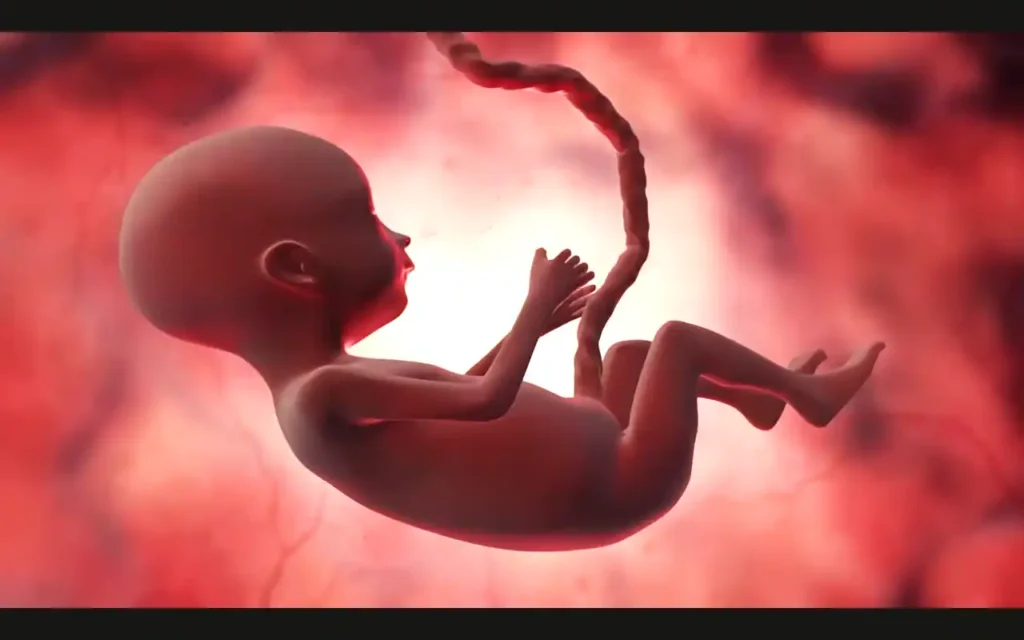
Monotremes left mammals 166 million years agoWere separated from them. Then, 125 million years ago, marsupials and placental mammals evolved in different directions. The continents of South America, Antarctica and Australia were connected until 40 million years ago. So when marsupials evolved, they spread across these three continents.
There was no ice in Antarctica at that time. There was a forest in Antarctica also. Today, as these continents have drifted apart, we see marsupials only on these three continents. But most marsupials are found in Australia. In South America, they could not compete with other mammals. But in Australia, they did not face competition from other mammals, which is why we see animals like kangaroos and koalas only in Australia.
The oldest fossils of placental mammals were found in northeastern China, dating back 125 million years. The name of this animal is Eomea. However, in a 2013 study, scientists disputed this, saying that this animal did not have all the characteristics we see in the rest of the placental mammals today.
Maureen O’Leary and her co-researchers counter this and say that the first placental mammals were actually found only 65 million years ago. And that animal looked something like this. He looked even more like a rat. Now we are coming to the most interesting part of the timeline because, at this time, dinosaurs were already extinct.
The asteroid killed all the dinosaurs. But this meant that mammals had a chance to dominate. There were many empty spaces in the Earth’s ecosystem where mammals could fit. A study published in the journal Science showed that the boom in placental mammals began just after the extinction of the dinosaurs.
If this had not happened we would never have seen the diversity in placental mammals. Man never exists. 40 million years ago, the Indian continental plate collided with Asia, creating the Himalayan Mountains. At the same time, placental mammals split into different branches. One such branch is that of ungulates, the hoofed mammals.
Cow, buffalo, pig, goat, camel, deer and hippopotamus all fall into this category. This branch was later divided into even-toed and odd-toed ungulates. Animals that have an even number of toes and animals that have an odd number of toes. Some odd-toed hoofed animals are donkeys, horses, zebras, and rhinoceroses.
The remaining examples were of even-toed ungulates. Apart from these, another branch of Carnivora order was formed. Carnivorous placental mammals. Dogs, cats, lions, tigers and hyenas all fall in this category. Interestingly, whales and dolphins are classified as cetaceans and their closest ancestry is with ungulates.
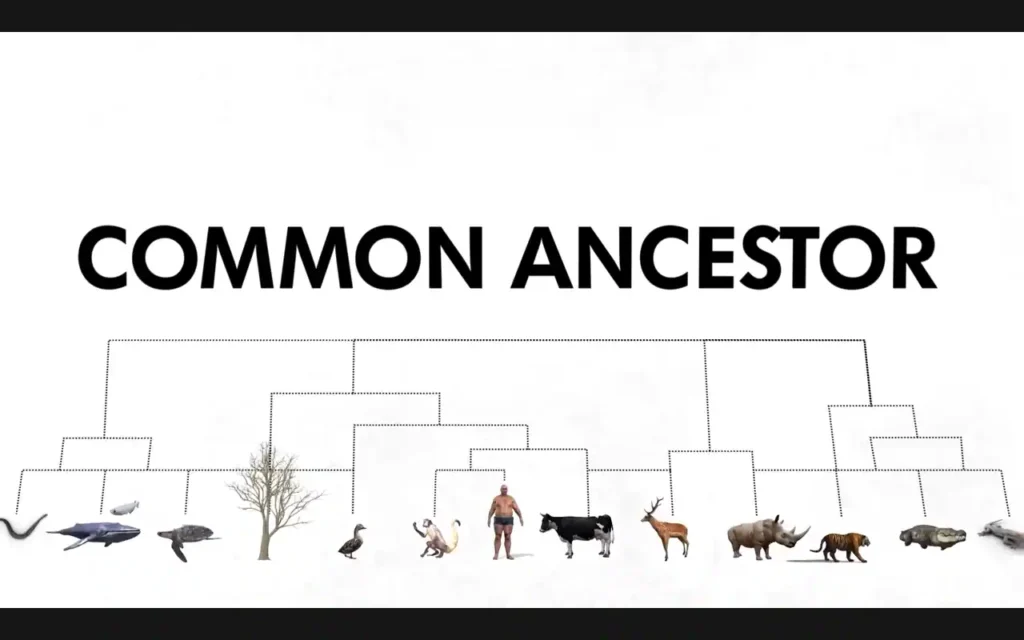
You heard it right. This means that whales and dolphins are most closely related to cows and buffaloes. Then there was the category of Afrotheria. This includes the elephant and this small animal called the hyrax. Evolution never ceases to surprise you. How can a big animal like an elephant and this small animal belong to the same category? How can they have the same ancestors? This is possible because evolution does not occur in a linear manner.
It goes in every direction wherever it can fit. What are the reasons behind development? There are 4 main reasons for this. These 4 reasons are known as the four forces of development. I have already told you about two of the four. One is genetic mutation. Mistakes made while replicating DNA accidentally cause mutations in genes during reproduction.
This may also be due to external factors. As ultraviolet light causes your skin cells to change and you get skin cancer. The second is natural selection. Gene traits that fit naturally into the ecosystem evolve best from there. But what are the third and fourth reasons? Let’s talk about them now.
The third reason is genetic drift. Basically, think of it as a big explosion in the environment that changes everything. A major catastrophic event. Let’s say there is a specific species of animal that is found on a specific island. And a volcano erupts on that island. Everything was destroyed. That animal will also be destroyed.
But if a subspecies of that animal existed on a nearby island, then after a volcanic disaster, that subspecies would have a chance to continue thriving. And in the future that subspecies will be found everywhere. This type of event is called the edit bottleneck effect type of genetic drift. This happened hundreds of years ago in America.
North American bison were found everywhere in the Americas. But humans hunted it and made it extinct. But one subspecies, called the plains bison, survived in a national park in the US. When conservation programs were started to save it, the bison population increased again. The population was composed entirely of this subspecies.
This became a bottleneck event, causing genetic drift. And today all bison in America belong to this subspecies of the Plains bison. These bison came from only 100 individual ancestors. 100 bison that survived by chance in Yellowstone National Park. Another type of genetic drift may be the founder effect.
When a small population of an animal gets separated and then returns to one place Reproduces. A good example of this can be seen among humans also. Amish people. The Amish people are a small community living in America and Canada. Their population is about 250,000 people. Their ancestors immigrated from Germany and Switzerland about 200 years ago.
The interesting thing is that only about 200 people came to America and Canada. But this community was so conservative that they never married any outsider. They kept intermarrying among themselves. The result was that for this population of 250,000 Amish people, their ancestors were among those 200 immigrants.
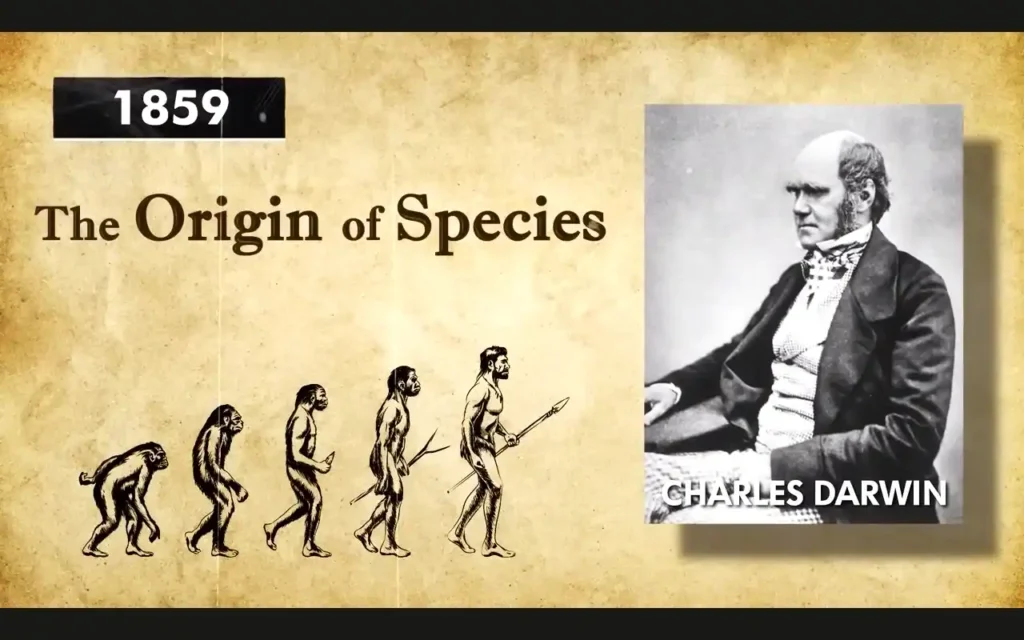
Racists may find this to be an excellent thing. They are getting married within themselves. But according to Charles Darwin, reducing genetic diversity is not a good thing. One of their 200 original founders was a man with a recessive gene that causes Ellis-van Creveld syndrome. This is a disease that causes your hands and feet to become shorter and your fingers to become longer.
As they continued to intermarry, this recessive gene continued to be passed on. And due to evolution, today the disease is disproportionately more common among Amish people than any other race globally. Therefore, from the evolutionary point of view, genetic diversity is always better. Seeing intermixing of different types of genes.
Now coming to the fourth reason, which is gene flow. This is similar to genetic drift, but here one population migrates to another and mixing occurs between the two. An example of this is the insecticide resistance gene found in African malaria mosquitoes. This resistance gene was found in some other species of mosquitoes.
But when that mosquito population came and interacted with these African mosquitoes, they passed on this insecticide resistance. Here, you might be wondering about the development timeline. How fast or slow is the growth? There is no concrete answer to this. It depends on the species. Evolution can take millions of years, as we saw in the case of mammals.
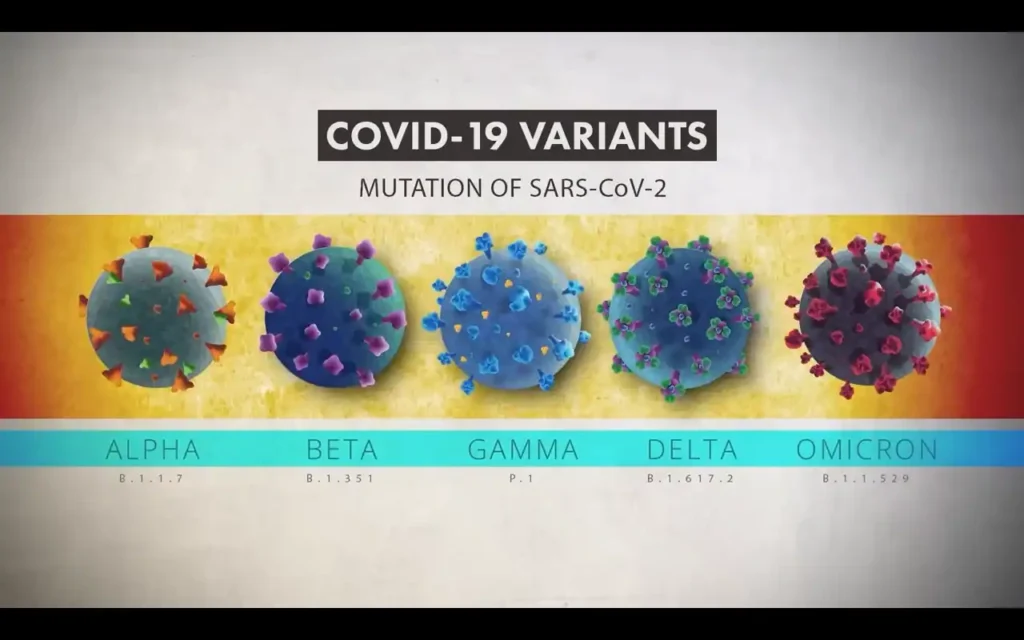
But on the other hand, it may take a year or two. A good example of this is Corona virus. We have seen a lot of mutations in the SARS-CoV-2 virus since the COVID-19 pandemic began. Delta variant, Omicron variant. If this was not evolution then what else was it? So it is surprising that some people still do not believe in evolution.
Evolution is not just a theory, it is a fact. When we use the word theory it means scientific theory. Any scientific theory is formed only when there is sufficient evidence. Albert Einstein’s theory of special relativity, the theory of the Big Bang and the theory of evolution. These are known as theories, but they are facts.
In this article, you saw irrefutable evidence proving evolution. But there is no evidence to counter this. To prove that evolution is not true. It is estimated that 97% of scientists believe that evolution is true. We have an explanation of what happened. It is a shame that there are some politicians in our government who do not believe in it and want to remove it from the school curriculum.
After knowing such irrefutable evidence, no sensible person will call evolution wrong. And so we come to the final part of our story. Evolution of Primates. Research in 2021 found that the ancestors of all primates may have co-existed with dinosaurs 65.9 million years ago. The evolution of primates into mammals was a major branch.
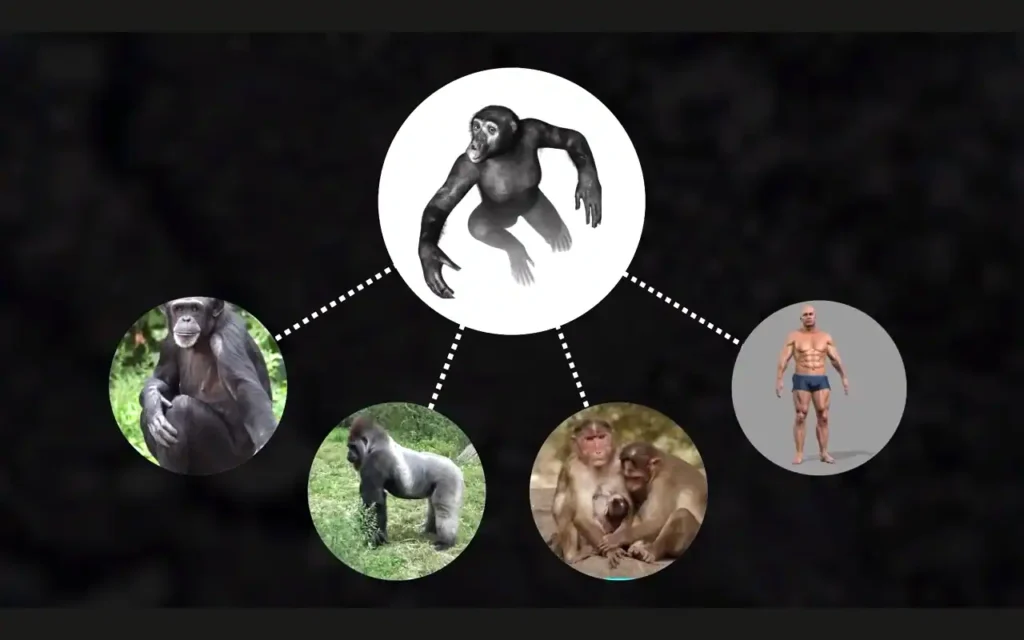
Only after this we get to see the evolution of gorillas, chimpanzees, monkeys and humans. what happened next? When and how did humans actually evolve? Let’s discuss this in a future article. This deserves a separate article in itself. Lastly, it is important to mention, I am reminded of a dialogue from Shaunak Sen’s documentary, ‘All That Breathes’.
It was said that life is a relationship, we are a community of air. Whatever breath there is, there should be no discrimination. This quote may sound spiritual. But if you think about it from the perspective of evolutionary history, it is also a scientific statement. All the species that exist today, plants, animals, all of them exist in a balance.
A balance where everyone fits harmoniously. Every species has its own place in the ecosystem. Be it a blood-sucking creature like a mosquito, a shark or a scavenger like a hyena, everyone is important in this ecosystem.

Thanks for reading, stay safe and informed..

